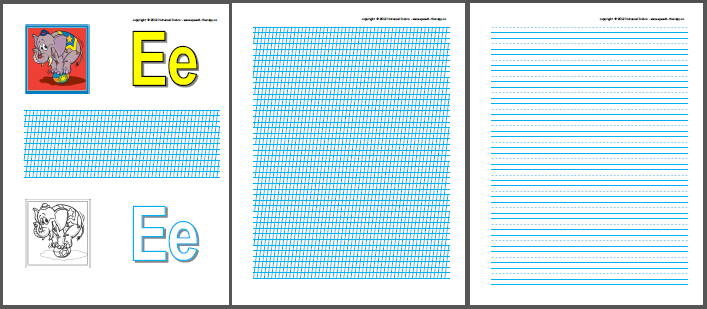Remember to read Terms of Service before you download something from this section.

 calligraphy.pdf
calligraphy.pdf calligraphy-type-I.pdf
calligraphy-type-I.pdf calligraphy-type-II.pdf
calligraphy-type-II.pdf en-calligraphy-type-I-angel.pdf
en-calligraphy-type-I-angel.pdf en-calligraphy-type-I-apple.pdf
en-calligraphy-type-I-apple.pdf en-calligraphy-type-I-balloon.pdf
en-calligraphy-type-I-balloon.pdf en-calligraphy-type-I-bear.pdf
en-calligraphy-type-I-bear.pdf en-calligraphy-type-I-bone.pdf
en-calligraphy-type-I-bone.pdf en-calligraphy-type-I-boot.pdf
en-calligraphy-type-I-boot.pdf en-calligraphy-type-I-bowling.pdf
en-calligraphy-type-I-bowling.pdf en-calligraphy-type-I-dolphin.pdf
en-calligraphy-type-I-dolphin.pdf en-calligraphy-type-I-dromedary.pdf
en-calligraphy-type-I-dromedary.pdf en-calligraphy-type-I-egg.pdf
en-calligraphy-type-I-egg.pdf en-calligraphy-type-I-elephant.pdf
en-calligraphy-type-I-elephant.pdf en-calligraphy-type-I-fire.pdf
en-calligraphy-type-I-fire.pdf en-calligraphy-type-I-garage.pdf
en-calligraphy-type-I-garage.pdf en-calligraphy-type-I-gift.pdf
en-calligraphy-type-I-gift.pdf en-calligraphy-type-I-giraffe.pdf
en-calligraphy-type-I-giraffe.pdf en-calligraphy-type-I-goat.pdf
en-calligraphy-type-I-goat.pdf en-calligraphy-type-I-guitar.pdf
en-calligraphy-type-I-guitar.pdf en-calligraphy-type-I-hippopotamus.pdf
en-calligraphy-type-I-hippopotamus.pdf en-calligraphy-type-I-house.pdf
en-calligraphy-type-I-house.pdf en-calligraphy-type-I-igloo.pdf
en-calligraphy-type-I-igloo.pdf en-calligraphy-type-I-jellyfish.pdf
en-calligraphy-type-I-jellyfish.pdf en-calligraphy-type-I-kangaroo.pdf
en-calligraphy-type-I-kangaroo.pdf en-calligraphy-type-I-keys.pdf
en-calligraphy-type-I-keys.pdf en-calligraphy-type-I-kilo.pdf
en-calligraphy-type-I-kilo.pdf en-calligraphy-type-I-knee.pdf
en-calligraphy-type-I-knee.pdf en-calligraphy-type-I-leopard.pdf
en-calligraphy-type-I-leopard.pdf en-calligraphy-type-I-lion.pdf
en-calligraphy-type-I-lion.pdf en-calligraphy-type-I-monkey.pdf
en-calligraphy-type-I-monkey.pdf en-calligraphy-type-I-nose.pdf
en-calligraphy-type-I-nose.pdf en-calligraphy-type-I-octopus.pdf
en-calligraphy-type-I-octopus.pdf en-calligraphy-type-I-penguin.pdf
en-calligraphy-type-I-penguin.pdf en-calligraphy-type-I-plane.pdf
en-calligraphy-type-I-plane.pdf en-calligraphy-type-I-queen.pdf
en-calligraphy-type-I-queen.pdf en-calligraphy-type-I-rocket.pdf
en-calligraphy-type-I-rocket.pdf en-calligraphy-type-I-snake.pdf
en-calligraphy-type-I-snake.pdf en-calligraphy-type-I-snowdrop.pdf
en-calligraphy-type-I-snowdrop.pdf en-calligraphy-type-I-stag.pdf
en-calligraphy-type-I-stag.pdf en-calligraphy-type-I-sun.pdf
en-calligraphy-type-I-sun.pdf en-calligraphy-type-I-swing.pdf
en-calligraphy-type-I-swing.pdf en-calligraphy-type-I-taxi.pdf
en-calligraphy-type-I-taxi.pdf en-calligraphy-type-I-taxi-.pdf
en-calligraphy-type-I-taxi-.pdf en-calligraphy-type-I-tigre.pdf
en-calligraphy-type-I-tigre.pdf en-calligraphy-type-I-unicorn.pdf
en-calligraphy-type-I-unicorn.pdf en-calligraphy-type-I-violin.pdf
en-calligraphy-type-I-violin.pdf en-calligraphy-type-I-wagon.pdf
en-calligraphy-type-I-wagon.pdf en-calligraphy-type-I-whale.pdf
en-calligraphy-type-I-whale.pdf en-calligraphy-type-I-yarn.pdf
en-calligraphy-type-I-yarn.pdf en-calligraphy-type-I-yogurt.pdf
en-calligraphy-type-I-yogurt.pdf en-calligraphy-type-I-zebra.pdf
en-calligraphy-type-I-zebra.pdf
Calligraphy is not currently included in the standard curriculum in Canadian schools. While calligraphy may be taught in some art or design classes at the post-secondary level, it is not a mandatory part of the K-12 curriculum. There may be a variety of reasons for this, and removing it from the curriculum is a disservice to students from my point of view. Not only the calligraphy is an important form of artistic expression that teaches valuable skills such as hand-eye coordination and patience, but also helps to preserve cultural traditions-a traditional art.
While there may not be specific research studies on the benefits of calligraphy in early education, there is evidence to suggest that handwriting, in general, can have a positive impact on cognitive development in children. For example, a 2014 study published in the journal "Frontiers in Psychology" found that children who practiced handwriting showed increased activation in areas of the brain associated with reading and writing, compared to children who simply viewed letters on a screen. The study suggests that the physical act of handwriting may help to reinforce the neural pathways involved in reading and writing, leading to better overall language skills.
Additionally, a 2018 study published in the "Journal of Educational Psychology" found that children who were taught cursive writing performed better on tests of reading, writing, and spelling than children who were only taught manuscript writing. The researchers suggest that the complex movements involved in cursive writing may help to improve fine motor skills and overall cognitive development in children.
So!!! ... handwriting in general can have important cognitive benefits for children.
The full references for the studies I mentioned earlier:
- Dinehart, L. H., & Manfra, L. (2018). The contribution of handwriting and spelling remediation to writing processes and outcomes: A quasi-experimental study. Journal of Educational Psychology, 110(4), 503-520. doi: 10.1037/edu0000236
- Longcamp, M., Boucard, C., Gilhodes, J. C., Anton, J. L., Roth, M., & Nazarian, B. (2014). Learning through handwriting: A functional MRI study. Frontiers in Psychology, 5, 37. doi: 10.3389/fpsyg.2014.00037
Additional - James, K. H., & Engelhardt, L. (2012). The effects of handwriting experience on functional brain development in pre-literate children. Trends in Neuroscience and Education, 1(1), 32-42. doi: 10.1016/j.tine.2012.08.001




You are not authorised to post comments.
Comments will undergo moderation before they get published.